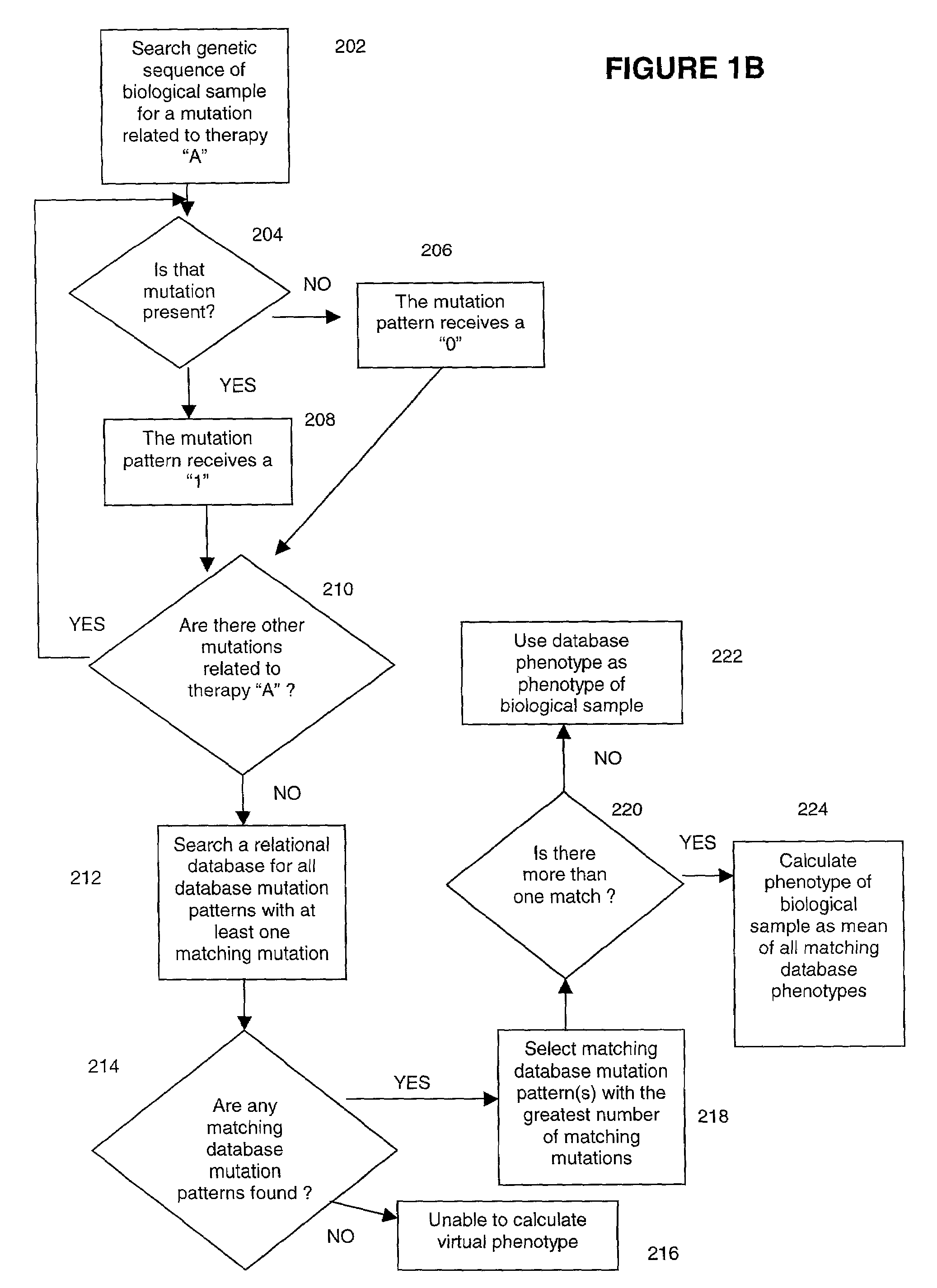Methods for measuring therapy resistance
a technology of resistance measurement and therapy, applied in chemical methods analysis, instruments, biochemical equipment and processes, etc., can solve the problems of resistance, many patients experience treatment failure or reduced efficacy, and all the compounds lose their effectiveness over time, so as to assess the effectiveness of a therapy on a patient
- Summary
- Abstract
- Description
- Claims
- Application Information
AI Technical Summary
Benefits of technology
Problems solved by technology
Method used
Image
Examples
example 1
Sample Source and Susceptibility Analysis
[0161]Plasma samples were obtained from patients and submitted to laboratories for routine assessment of drug susceptibility. These were collected mainly from the USA, Canada and Europe, although samples from South America, South East Asia and South Africa are also represented in the relational genotype / phenotype database. Due to the nature of collection of these samples, comprehensive therapy and clinical histories from the majority of the patients involved could not be obtained—although most were from different individual patients. Viral RNA was extracted from these samples and converted to cDNA by reverse transcription. Subsequently, a 1.7 kb fragment of the HIV-1 genome that encompassed part of gag, the protease and the first 400 codons of RT was amplified by PCR. These amplicons were directly sequenced by ABI automated sequencing and the drug susceptibility phenotype was determined for 14 individual antiretroviral drugs, using a recombin...
PUM
| Property | Measurement | Unit |
|---|---|---|
| resistance | aaaaa | aaaaa |
| Drug resistance | aaaaa | aaaaa |
| drug resistance | aaaaa | aaaaa |
Abstract
Description
Claims
Application Information
 Login to View More
Login to View More - R&D
- Intellectual Property
- Life Sciences
- Materials
- Tech Scout
- Unparalleled Data Quality
- Higher Quality Content
- 60% Fewer Hallucinations
Browse by: Latest US Patents, China's latest patents, Technical Efficacy Thesaurus, Application Domain, Technology Topic, Popular Technical Reports.
© 2025 PatSnap. All rights reserved.Legal|Privacy policy|Modern Slavery Act Transparency Statement|Sitemap|About US| Contact US: help@patsnap.com



